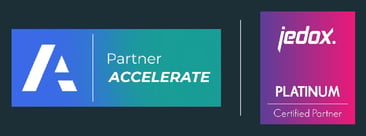How Non-IT People can get data ready for Digital Transformation Projects in 2023!
In 2023, companies are drowning in data, and this trend is set to continue, for instance, IDC predicts that by 2025, 175 ‘zettabytes’ of new data will be created globally. I know what you’re thinking, ‘what on Earth is a zettabyte?’ Well, apparently, it’s a trillion gigabytes – quite a bit more than your average mobile phone contract’s data allowance.
This proliferation of data is being partially driven by a range of futuristic sounding terms, including Internet of Things, AI, and Big Data – but in a much more tangible sense, we can all attest to the increasing number of applications available to us, in business and in our everyday lives. The average department in a business has between 40 and 60 applications. Interestingly, business functions manage over half of these applications now, as opposed to Central IT.
With this increasing responsibility for IT applications, lines of business can no longer ‘chuck data issues over the fence’ and they should, as a result, be proactive with respect to the setup and ownership of applications they are more than likely to inherit!
You may very well feel that in this situation the data is driving you and not vice versa, or to steal a phrase from Nick Perryman, Director of Supply for Coca-Cola Europe, ‘data, data everywhere and no time to stop and think’! But before taking on any new software project in 2023, it is imperative that you take some time to stop and think because a successful project is only as good as the integrity of the data outputs once you’ve ‘gone live’; and with an ever-increasing volume of applications requiring integration to amalgamate the required datasets, time spent upfront can prevent headaches for your organisation later down the line.
So let’s dive into the topic of data, from a typical business person’s perspective, in a practical and meaningful way: before your project(s) - what needs to be considered, tackled, and why?
FIRST ASK 'WHAT DO BUSINESS USERS REALLY NEED?'
Not all data is relevant for all users. Thinking of a finance example, KPIs for a CFO are completely different from the specific and potentially very granular data sets required by a Management Accountant when updating a rolling forecast.
You need to think very carefully about what data you surface and how you present it.
For example, to achieve an automated, rolling, driver-based forecasting process that enables the business to;
• Make better decisions in relation to revenue opportunities
• Make cost reductions
• Have visibility into Cash Flow and Working Capital to ensure sufficient liquidity
• Adapt quickly to regional or group-level scenario changes
you need to think conceptually about how your business hangs together i.e in order for your product to reach store shelves, do you have a clear vision of every step in the journey?
1. From sourcing raw material
2. To Manufacturing
3. To Marketing
4. To Selling
5. Until the final point at which the product is in the customer’s hands, and you recognise company revenue.
Every single part of that process has a bearing on Finance’s ability to create a budget and effectively re-forecast.
DATA TRANSFORMATION
Envisaging your application or platform at the center of a connected IT architecture you will have multiple data integration points.
In the ideal world, you should consider having the same data identifiers and structures across systems. For example, if you imagine data integration with your source ERP system into your planning system, you would want to have the same list of nominal codes, with the same unique item ID. E.g GL-1000 is the same nominal code in your ERP as it is in the planning system.
This should always be your preferred starting point, to ensure clarity, ease, and transparency when creating data imports between the two systems. This means that when new items are added, or existing items amended, they are the same across your entire system architecture, and updates occur without errors, omissions or anomalies.
However, this might not always be possible, so you should also take into consideration how and where you will translate data between systems. E.g if GL-1000 in your ERP is SZD-1000 in your planning system, formulate how you will tackle this.
- Will you manually map source to target and update imports as and when required?
- Will you have an Extract, Transform, and Load (ETL) layer between the two systems that will translate the ERP code into a planning system code?
- Will you create a mapping table within the platform to create a relationship between the source code and the target code?
Ultimately you should aim to clean data at source, otherwise, the issues will repeat themselves for any new projects in the future, but where this is not always possible, a good system will help with both establishing and maintaining this relationship for you.
IN SUMMARY
It’s clear that data abundance is here to stay, and that insightful and actionable data analysis will remain at the heart of business decisions. Furthermore, the ongoing maintenance and ownership of the tools put in place to enable this data modeling and analysis will fall to the various business functions, so clearly steps must be established to engage with your data easily, seamlessly, and with insight; especially as this is a business fundamental not just in financial forecasting but for all business functions and departments including Supply Chain, HR, Sales, and Marketing. Hopefully, you can see from the practical advice above that the power to achieve system architecture and data integrity IS in your hands - and you can establish excellent principles without being a data scientist!
And finally, just remember… there is no such thing as ‘the perfect data set’ so don’t let this hold you back in 2023!
Peter Dixon & Catherine Hubbard - Anaplan UK
If you have any comments, feedback, or queries please feel free to pop them down below.

